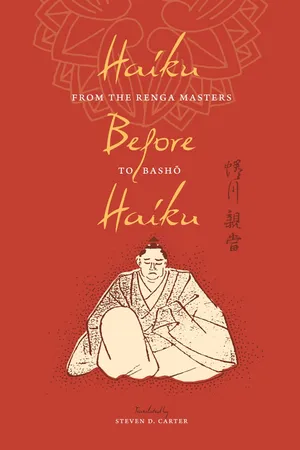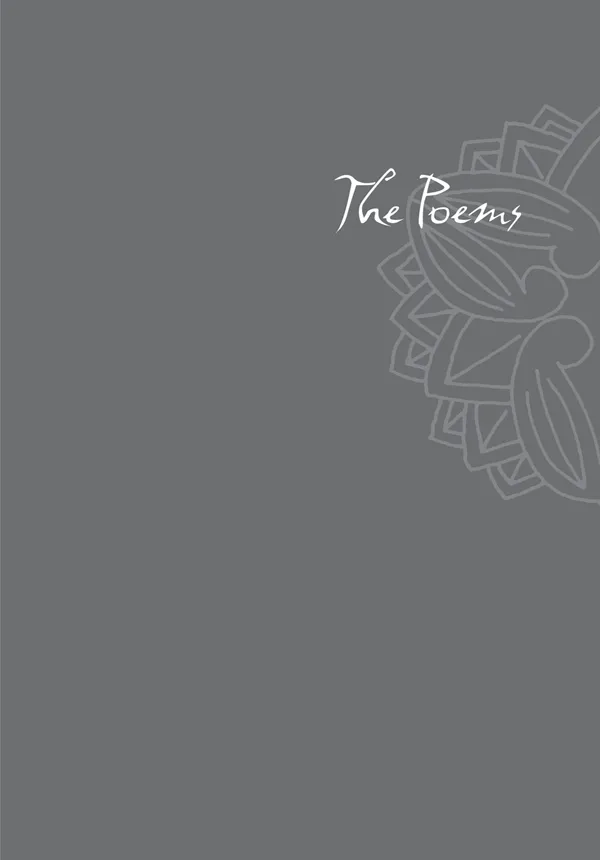
- English
- ePUB (mobile friendly)
- Available on iOS & Android
About this book
While the rise of the charmingly simple, brilliantly evocative haiku is often associated with the seventeenth-century Japanese poet Matsuo Basho, the form had already flourished for more than four hundred years before Basho even began to write. These early poems, known as hokku, are identical to haiku in syllable count and structure but function differently as a genre. Whereas each haiku is its own constellation of image and meaning, a hokku opens a series of linked, collaborative stanzas in a sequence called renga.
Under the mastery of Basho, hokku first gained its modern independence. His talents contributed to the evolution of the style into the haiku beloved by so many poets around the world—Richard Wright, Jack Kerouac, and Billy Collins being notable devotees. Haiku Before Haiku presents 320 hokku composed between the thirteenth and early eighteenth centuries, from the poems of the courtier Nijo Yoshimoto to those of the genre's first "professional" master, Sogi, and his disciples. It features 20 masterpieces by Basho himself. Steven D. Carter introduces the history of haiku and its aesthetics, classifying these poems according to style and context. His rich commentary and notes on composition and setting illuminate each work, and he provides brief biographies of the poets, the original Japanese text in romanized form, and earlier, classical poems to which some of the hokku allude.
Frequently asked questions
- Essential is ideal for learners and professionals who enjoy exploring a wide range of subjects. Access the Essential Library with 800,000+ trusted titles and best-sellers across business, personal growth, and the humanities. Includes unlimited reading time and Standard Read Aloud voice.
- Complete: Perfect for advanced learners and researchers needing full, unrestricted access. Unlock 1.4M+ books across hundreds of subjects, including academic and specialized titles. The Complete Plan also includes advanced features like Premium Read Aloud and Research Assistant.
Please note we cannot support devices running on iOS 13 and Android 7 or earlier. Learn more about using the app.
Information

Country, on the last day of the Ninth Month, when people planning a linked-verse party asked her for a hokku
already—on the day
autumn ends.
again—on the day
winter begins.
crickets in the heavy dew
of Fukakusa.
a garland for the branches
of an old tree.
Or moonlight forming
in the grasses?
come out of the clouds,
spring moon!
drenching fallen leaves
in sunlight.
don’t wait for us to wait,
cuckoo!
that know no summer
autumn bobs along.
autumn wind shows itself
in a single leaf.
but not yet turned—
autumn showers.
you are known for singing,
cuckoo!
the crimson of spring—
plum leaves.
it makes no sound at all—
autumn rain.
only rain would not admire
the moon.
Table of contents
- Cover
- Half title
- Editorial Board
- Title
- Copyright
- Dedication
- Contents
- Acknowledgments
- Introduction
- The Poems
- Bibliography
- Translations from the Asian Classics